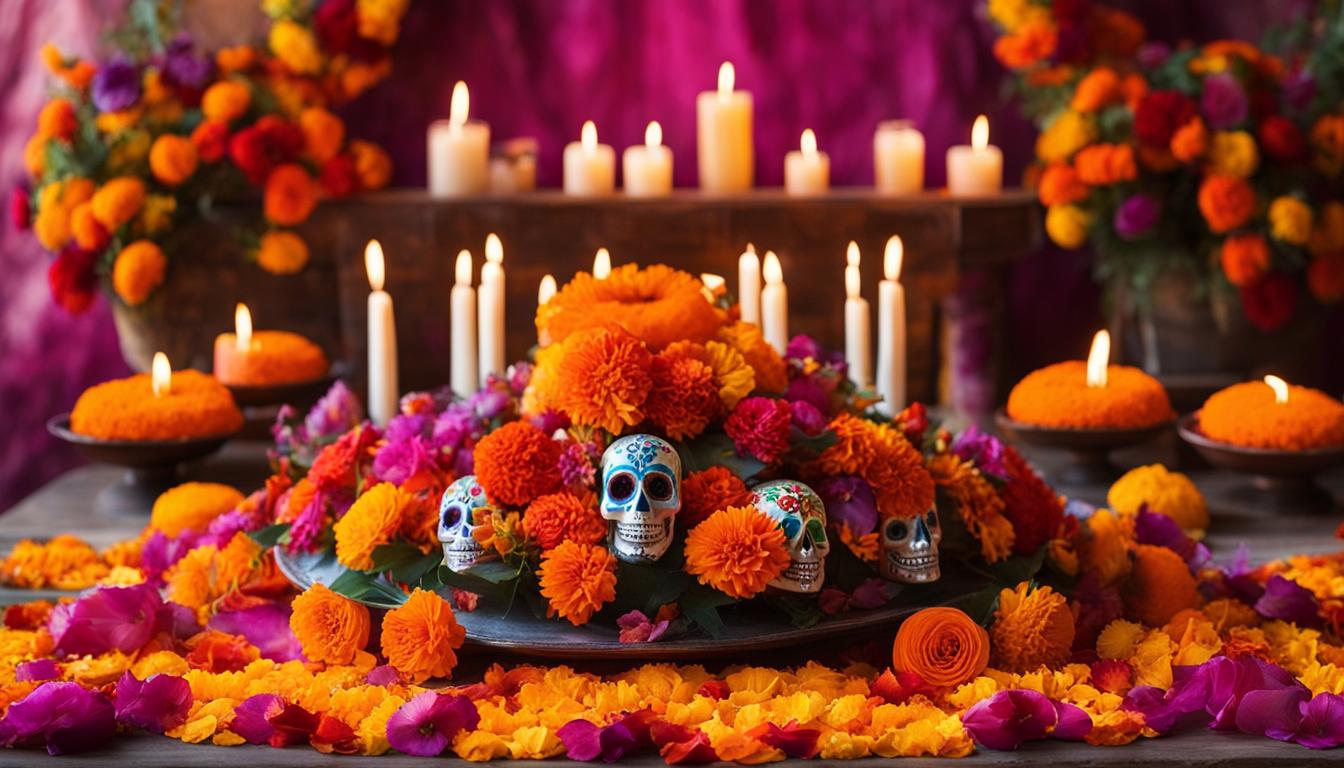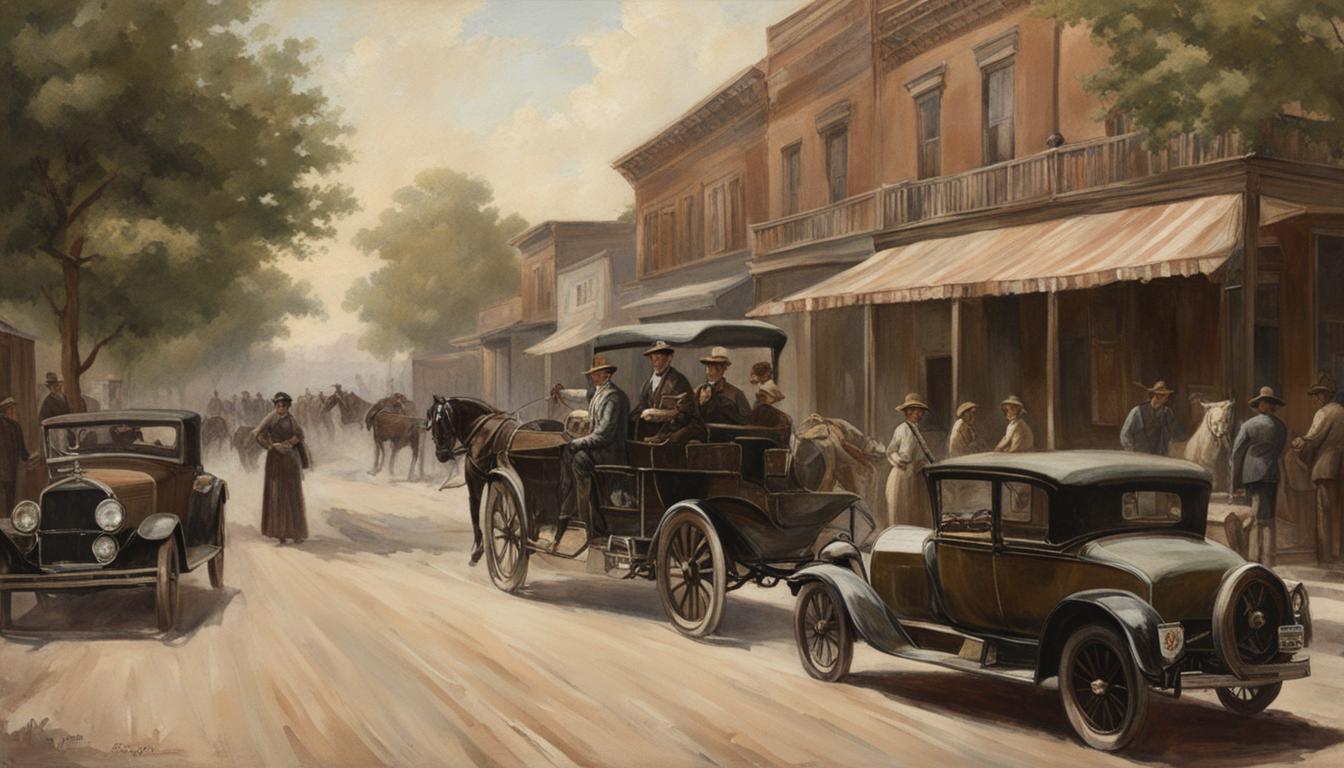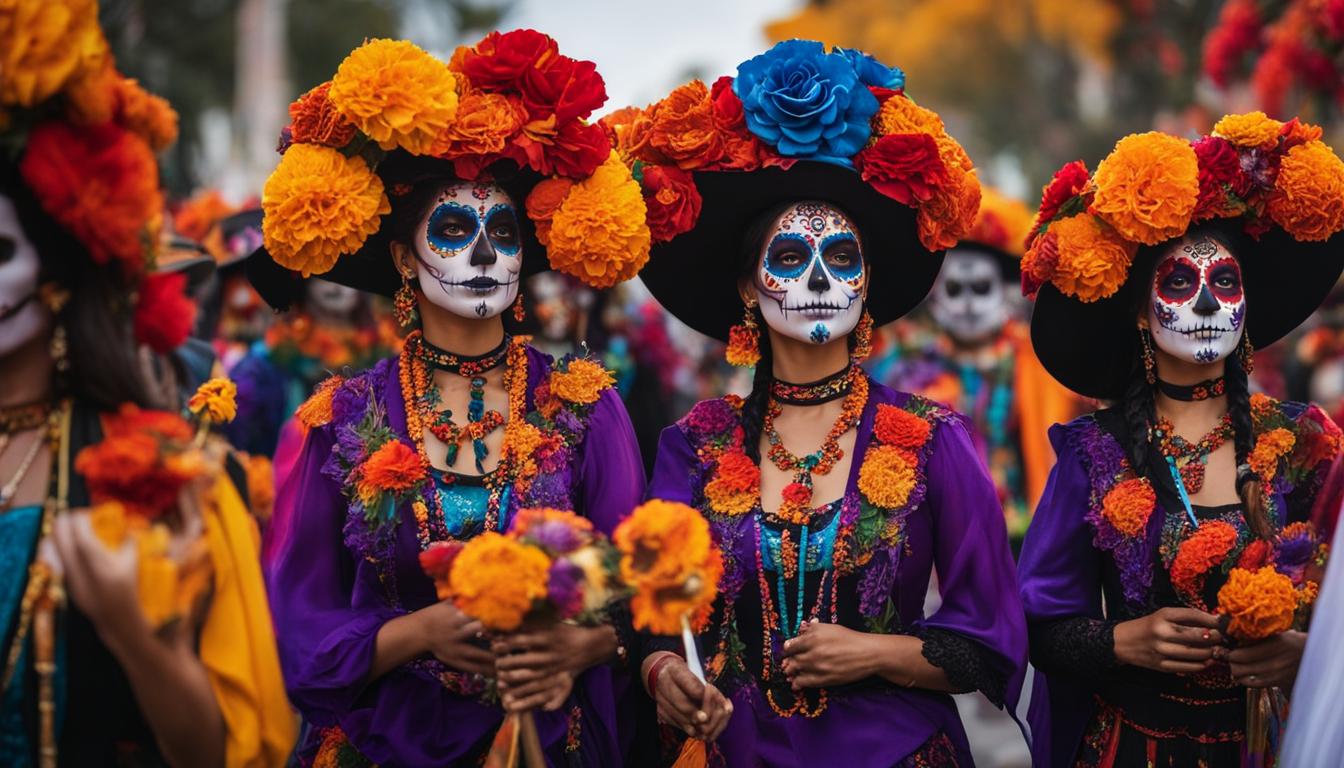The Day of the Dead, known as Dia de los Muertos in Mexico, is a vibrant and cherished Mexican holiday celebrated with deep cultural significance. This traditional celebration involves various rituals, such as the creation of sugar skulls, the decoration of altars, and the honoring of ancestors. It is a festive and colorful occasion that brings communities together to remember and celebrate the lives of loved ones who have passed away.
The Day of the Dead is a time-honored Mexican holiday filled with cultural celebration and rich traditional rituals. This beloved holiday brings communities together to remember and honor their ancestors through vibrant festivities and meaningful customs. From the creation of intricate sugar skulls to the decoration of elaborate altars, the Day of the Dead captures the essence of Mexican cultural heritage. Join us as we delve into the captivating world of this enchanting Mexican holiday and uncover the secrets behind its festive traditions.
Key Takeaways:
- Day of the Dead is a cherished Mexican holiday celebrated with deep cultural significance.
- The celebration involves various rituals, such as creating sugar skulls and decorating altars.
- Day of the Dead brings communities together to remember and celebrate the lives of loved ones.
- The holiday is a time to honor ancestors and embrace the circle of life and death.
- Through vibrant festivities and colorful traditions, Day of the Dead showcases Mexico’s rich cultural heritage.
The History and Significance of Day of the Dead
The Day of the Dead, also known as Dia de los Muertos, has a rich history and deep cultural significance in Mexico. This annual celebration traces its roots back to ancient Mexican civilizations, such as the Aztecs. The history of Day of the Dead is intertwined with the beliefs and rituals surrounding death and the afterlife.
In Mexican traditions, it is believed that during the Day of the Dead, the boundary between the living and the dead becomes blurred. It is believed that the souls of deceased ancestors return to visit their loved ones. This celebration serves as a way to honor and remember the departed while embracing the circle of life and death.
Day of the Dead is deeply ingrained in Mexican culture and is considered an important part of the country’s heritage. The celebration showcases the unique customs and traditions that have been passed down through generations. From the creation of elaborate altars to the offering of traditional food and drinks, Day of the Dead is a time to pay homage to ancestors and celebrate the lives they lived.
| Day of the Dead | Halloween | |
|---|---|---|
| Origin | Ancient Mexican civilizations | Celtic festival of Samhain |
| Focus | Honoring and remembering ancestors | Warding off evil spirits |
| Traditions | Creating altars, offering food and drinks to the departed | Trick-or-treating, costume parties |
| Colors | Bright and vibrant | Orange and black |
The Day of the Dead holds a special place in Mexican culture, blending ancient rituals with vibrant customs. It is a time of celebration, remembrance, and unity as communities come together to honor the departed and embrace the cycle of life and death.
Festive Preparations and Traditional Rituals
Preparing for the Day of the Dead festivities involves a range of joyful and meaningful traditions. Families and communities come together to create elaborate altars, transforming them into beautiful and sacred spaces to honor their deceased loved ones. These altars, known as ofrendas, are adorned with vibrant marigold flowers, which are believed to guide the spirits of the departed back to their families. The sight of these vibrant blooms in homes, cemeteries, and public spaces adds a touch of color and warmth to the celebration.
In addition to the floral decorations, altars are filled with photographs, personal belongings, and cherished mementos of the deceased. These items serve as a way to remember and honor their lives, preserving their memory and ensuring that they are present in spirit during the festivities. Food offerings, including the favorite dishes of the departed, are also placed on the altars to nourish their souls as they join in the celebration. It is believed that the aroma and essence of the food will attract and please the spirits, allowing them to partake in the joy and festivities of the Day of the Dead.
Candlelight vigils are an integral part of the Day of the Dead celebration, adding a serene and spiritual ambiance to the festivities. Families and friends gather around the altars, lighting candles to guide the souls of the departed back to their families. The flickering flames not only provide a gentle glow but also serve as a symbol of remembrance and hope. The candlelight vigils create a tranquil atmosphere where people can reflect, pray, and connect with their loved ones in a deeply meaningful way.
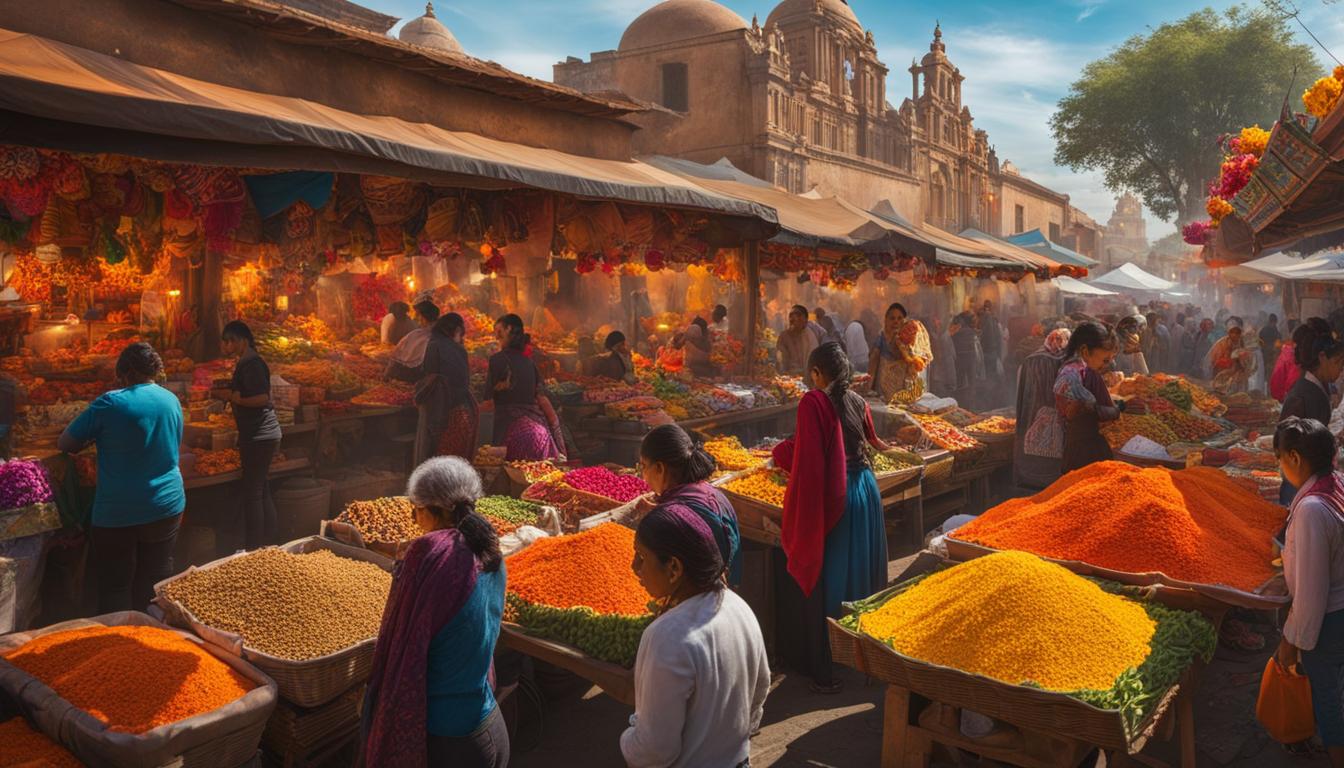
As the Day of the Dead approaches, the festive preparations and traditional rituals come together to create a beautiful and vibrant celebration that honors the lives of the departed. The altars, adorned with marigold flowers, photographs, and food offerings, serve as a physical and spiritual connection between the living and the dead. The candlelight vigils provide a serene ambiance, guiding the souls back to their families for a night of remembrance and celebration. These heartfelt traditions and preparations allow communities to come together, fostering unity and a deep appreciation for the circle of life.
The Symbolism of Sugar Skulls
The Day of the Dead celebration is known for its vibrant and intricate sugar skulls, which hold deep symbolism and meaning. These beautifully crafted skulls are a prominent feature of the festivities and serve as a powerful reminder of the impermanence of life and the importance of cherishing the memories of those who have passed away.
Decorated with colorful designs and patterns, sugar skulls are not only visually stunning but also rich in symbolism. Each skull is unique and often personalized with the name of the deceased loved one it represents. This personalization adds a heartfelt touch to the celebration and serves as a way to honor and remember the individual.
“Sugar skulls are more than just decorative elements. They are intricately linked to the Day of the Dead tradition and represent the souls of departed loved ones. Through their creation and display, we pay homage to our ancestors and acknowledge the cycle of life and death,” says Maria Rodriguez, a cultural historian.
Detailed Meaning of Sugar Skull Elements
The designs and decorative patterns on sugar skulls have specific meanings that add depth and significance to their symbolism. Here are some common elements found on sugar skulls and their interpretations:
- Flowers: Marigold flowers, also known as cempasuchil, are frequently featured on sugar skulls. These vibrant flowers are believed to guide the spirits of the departed back to their loved ones.
- Hearts: Representing love and affection, hearts symbolize the eternal bond between the living and the deceased.
- Butterflies: Butterflies are a symbol of transformation and the journey of the soul after death, signifying the transition from one life to the next.
- Crosses: Crosses symbolize faith and spirituality, reflecting the belief that the souls of the departed continue their spiritual journey beyond death.
| Symbol | Meaning |
|---|---|
| Flowers | Guidance for the spirits to return to their loved ones |
| Hearts | The eternal bond between the living and the deceased |
| Butterflies | Symbol of transformation and the journey of the soul after death |
| Crosses | Representation of faith and spirituality |
The symbolism of sugar skulls is a beautiful and significant aspect of the Day of the Dead celebration. Through their vibrant designs and intricate details, these sweet confections honor the memories of departed loved ones and offer a poignant reminder of the cycle of life and death.
Festive Art and Vibrant Displays
The Day of the Dead celebration is a feast for the eyes, filled with vibrant art and dazzling displays that capture the spirit of this cultural extravaganza. From traditional street art to innovative digital installations, the festival showcases the rich artistic heritage of Mexico.
Street art plays a significant role in the Day of the Dead celebration, with talented artists using walls and public spaces as their canvas to depict the colorful and symbolic imagery associated with this holiday. Murals featuring sugar skulls, marigold flowers, and skeletal figures adorn the streets, creating a visual spectacle that immerses participants in the festive atmosphere. These vibrant works of art not only add beauty to the celebration but also serve as a visual representation of the traditions and customs of Day of the Dead.
In recent years, digital displays have become increasingly popular during the Day of the Dead festivities. These cutting-edge installations use technology to bring the holiday to life in a new and captivating way. From interactive projections that allow participants to engage with the artwork to immersive light shows that transform entire buildings into vibrant displays, these digital creations add a modern twist to the celebration while staying true to its cultural roots.
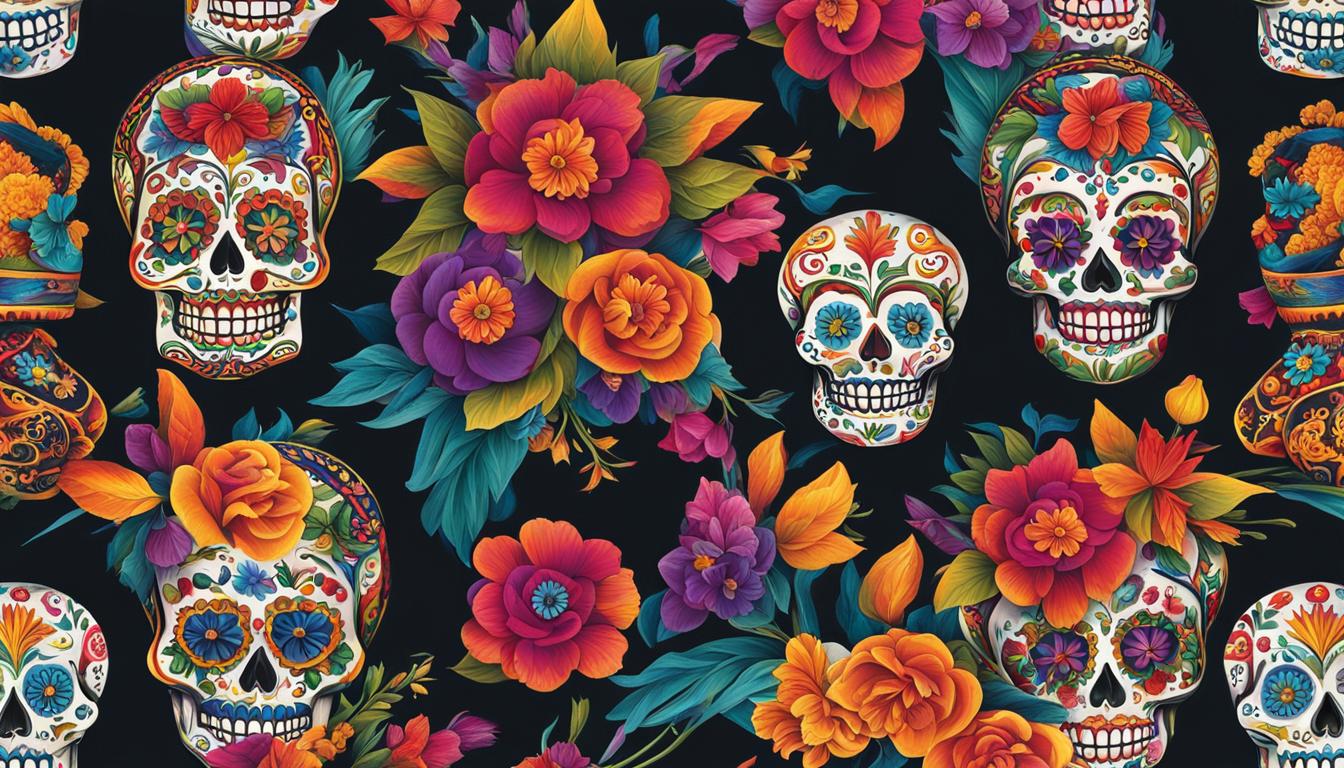
Artistic Expressions
Artistic expressions during the Day of the Dead go beyond street art and digital displays. They also encompass a wide range of mediums, including sculpture, painting, and photography. Artists use these forms of expression to explore themes of life, death, and remembrance. Their works often evoke a sense of nostalgia and reverence while celebrating the vibrancy and joy of life.
The Day of the Dead celebration is a testament to the power of art in preserving and celebrating cultural traditions. Through the vivid displays and artistic expressions, participants not only pay tribute to their ancestors but also embrace the beauty and richness of Mexican culture.
Environmental Awareness and Sustainability
In recent years, there has been a growing concern for environmental awareness and sustainability during the Day of the Dead celebrations. Many communities are incorporating eco-friendly practices into their festivities, such as using biodegradable materials for altars and decorations. This reflects a conscious effort to honor the earth while celebrating the lives of the departed.
One way that communities are promoting sustainability is by using organic and locally sourced materials to create altars and decorations. Instead of using plastic or synthetic materials that take years to decompose, biodegradable options such as natural fibers and plant-based materials are being utilized. This not only reduces the environmental impact but also adds a touch of authenticity to the celebration.
Furthermore, there is a growing trend of reusing and repurposing materials for Day of the Dead decorations. Instead of purchasing new items each year, families are finding creative ways to use existing materials and incorporate them into their altars and displays. This not only reduces waste but also encourages resourcefulness and creativity.
Eco-Friendly Practices for Day of the Dead Celebrations
Aside from using sustainable materials, communities are also implementing eco-friendly practices during the Day of the Dead celebrations. For example, instead of using traditional candles that emit smoke and contribute to air pollution, LED candles are being used as a safer and more environmentally friendly alternative. These candles not only reduce the risk of fire, but they also save energy and can be reused for future celebrations.
Additionally, there is a growing emphasis on the reduction of plastic waste during the Day of the Dead festivities. Communities are encouraging participants to use reusable containers and utensils for food offerings and drinks, minimizing the use of single-use plastics. This shift towards more sustainable practices not only reduces waste but also encourages participants to be mindful of their environmental impact.
| Sustainable Practices | Benefits | |
|---|---|---|
| 1 | Using biodegradable materials for altars and decorations | Reduces environmental impact and honors the earth |
| 2 | Reusing and repurposing materials | Reduces waste and encourages resourcefulness |
| 3 | Using LED candles instead of traditional candles | Reduces the risk of fire, saves energy, and can be reused |
| 4 | Encouraging the use of reusable containers and utensils | Reduces plastic waste and promotes sustainability |
“We believe that by incorporating sustainable practices into our Day of the Dead celebrations, we are not only honoring our loved ones but also the planet they once called home. It’s about creating a meaningful and eco-friendly experience for everyone involved.” – Community Organizer
The growing emphasis on environmental awareness and sustainability during the Day of the Dead celebrations highlights the commitment of communities to preserve their cultural traditions while minimizing their impact on the environment. By incorporating eco-friendly practices, communities are not only creating a more sustainable future but also setting an example for future generations.
Community Unity and Shared Traditions
The Day of the Dead celebration fosters a sense of community unity and shared traditions among the participants. It brings people together to honor and remember their loved ones, bridging the gap between the living and the dead. Through the celebration, individuals come to realize the universal nature of love, loss, and the timeless journey of life.
This sense of unity is evident in the various rituals and customs practiced during the Day of the Dead. Families and communities gather to create intricate altars adorned with photos, personal belongings, and favorite foods of the departed. These altars serve as a focal point for remembrance, encouraging open conversations and storytelling about the lives and memories of loved ones.
Additionally, the Day of the Dead celebration often involves communal activities such as parades, music performances, and traditional dances. These shared experiences not only bring people together but also help to strengthen cultural bonds and preserve ancestral traditions. Participants take pride in their shared heritage and the opportunity to connect with others who understand the significance of the holiday.
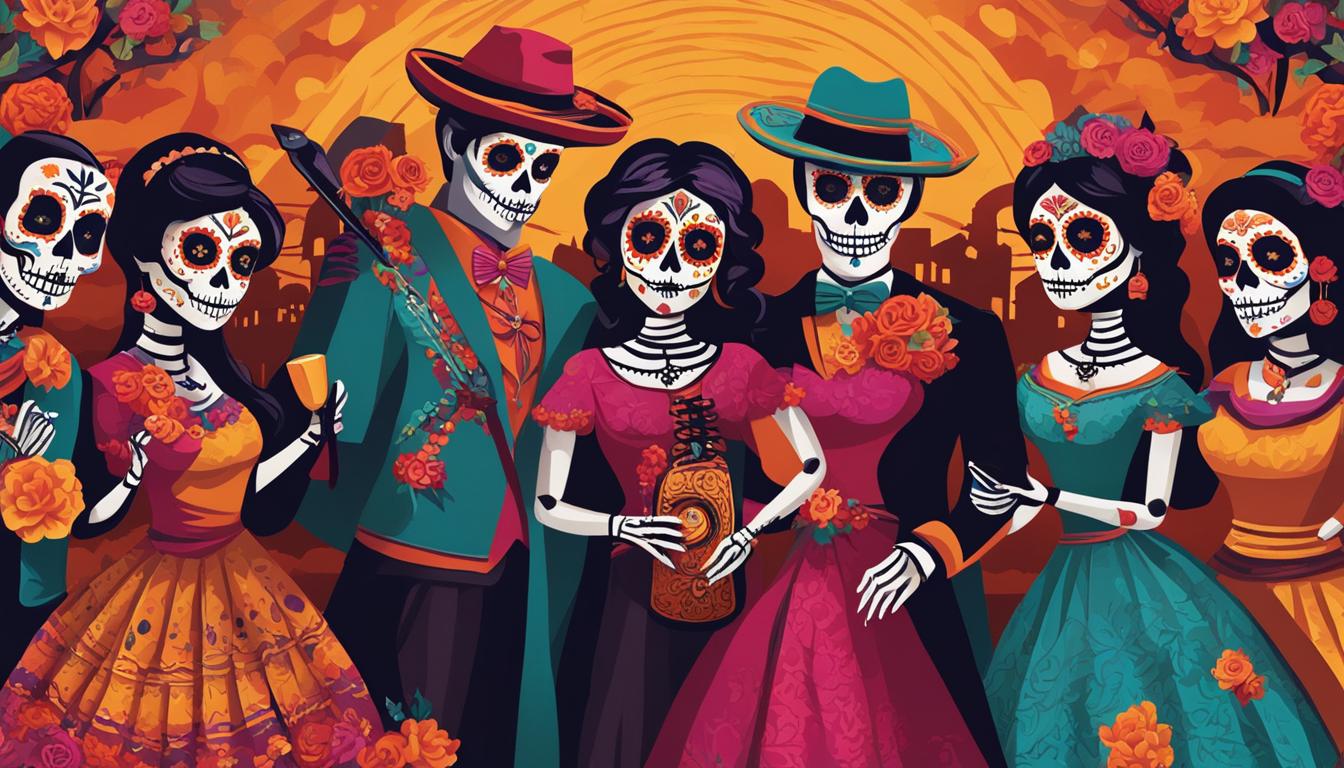
Symbolism of the Calavera Catrina
“The Calavera Catrina, a skeletal figure dressed in elegant attire, has become an iconic symbol of the Day of the Dead. It represents the idea that death is an equalizer, as it does not distinguish between the rich and the poor. This symbolism serves as a reminder for individuals to embrace the beauty and transience of life, regardless of their social status. The Calavera Catrina is often depicted wearing a fancy hat, symbolizing the allure of death and the embrace of one’s mortality.”
The Day of the Dead celebration is a testament to the power of community, shared traditions, and the enduring legacy of loved ones. It serves as a time for reflection, gratitude, and celebration, reminding us of the interconnectedness of life and death.
Day of the Dead Picture Books for Children
Introducing children to the magic and wonder of the Day of the Dead is made easy with a variety of picture books available. These books not only educate children about the traditions and customs associated with the celebration but also foster a sense of understanding and appreciation for different cultures. Through storytelling and vibrant illustrations, these books provide a captivating introduction to the rich cultural heritage of the Day of the Dead.
One such book is “The Dead Family Diaz” by P.J. Bracegirdle. This charming picture book follows the Diaz family as they prepare for the Day of the Dead festivities. Through the eyes of the youngest member, Angelito, readers are introduced to the various elements of the celebration, such as decorating the family altar and making sugar skulls. The book beautifully captures the spirit and joy of the holiday while emphasizing the importance of honoring departed loved ones.
| Book | Author | Description |
|---|---|---|
| “Rosita y Conchita: A Rhyming Storybook in English and Spanish” | Eric Gonzalez and Erich Haeger | This bilingual picture book tells the heartwarming story of two sisters, Rosita and Conchita, as they prepare to honor their departed twin brother on the Day of the Dead. Through vivid illustrations and poetic storytelling, the book explores the themes of love, loss, and remembrance. |
| “Just a Minute: A Trickster Tale and Counting Book” | Yuyi Morales | This imaginative picture book combines elements of the Day of the Dead with a traditional Mexican folk tale. Through captivating illustrations and interactive counting, readers are introduced to Señor Calavera, a mischievous skeleton who tries to trick Grandma Beetle into leaving with him. |
| “The Remembering Day/El Dia de los Muertos” | Pat Mora | This bilingual picture book explores the themes of family, love, and remembrance. Through beautiful illustrations and poetic language, the book follows a young girl as she learns about the Day of the Dead from her grandmother. It highlights the importance of cherishing memories and celebrating the lives of departed loved ones. |
These picture books offer a wonderful way to engage children in the storytelling and traditions of the Day of the Dead. By introducing them to the vibrant illustrations, rich narratives, and cultural customs, these books help children develop an appreciation for diverse cultures and traditions.
Celebrating Day of the Dead with Literature
Day of the Dead literature, including children’s books, plays a significant role in celebrating and honoring this cultural holiday. These books serve as a platform for cultural storytelling, preserving and passing down traditions, and creating a deeper connection to the rich heritage of the Day of the Dead.
Children’s books on the Day of the Dead provide a wonderful way to introduce young readers to this vibrant celebration. Through beautifully illustrated pages and engaging stories, children learn about the customs, rituals, and values associated with the holiday. These books not only educate but also inspire curiosity and empathy, encouraging readers to appreciate different cultures and fostering a sense of cross-cultural understanding.
One popular example is “The Day of the Dead/El Día de los Muertos” by Bob Barner. This bilingual book features colorful illustrations and simple, informative text that explains the significance of the holiday. It explores the themes of remembering and honoring loved ones, while also highlighting traditional Day of the Dead symbols such as sugar skulls, marigold flowers, and altars.
“Day of the Dead literature provides a meaningful way to celebrate and honor the holiday. Through stories and books, readers of all ages can deepen their understanding and connection to this rich cultural celebration.”
By immersing ourselves in Day of the Dead literature, we can gain a deeper appreciation for the traditions and values associated with this holiday. These books not only entertain but also serve as a tool for heritage preservation, ensuring that the customs and significance of the Day of the Dead are passed down from one generation to the next.
| Book Title | Author | Description |
|---|---|---|
| The Day of the Dead/El Día de los Muertos | Bob Barner | This bilingual book introduces children to the customs and symbols of the Day of the Dead, emphasizing the importance of honoring loved ones. |
| Calavera Abecedario: A Day of the Dead Alphabet Book | Jeanette Winter | This alphabet book follows the journey of a skeleton as it celebrates the Day of the Dead, showcasing the unique customs associated with each letter. |
| Rosita y Conchita | Eric González and Erich Haeger | This heartwarming story follows the journey of young Conchita as she prepares to celebrate the Day of the Dead and reunite with her sister, Rosita. |
Day of the Dead literature allows us to immerse ourselves in the beauty and richness of this cultural celebration. Whether through storytelling, informative books, or engaging illustrations, these literary works provide a gateway to understanding and appreciating the traditions and customs associated with the Day of the Dead.

Table: Popular Day of the Dead Mystery Books
| Title | Author | Synopsis |
|---|---|---|
| The Skeleton Key | James Rollins | A thrilling adventure set during the Day of the Dead festivities in Mexico City, where a hidden key holds the power to unlock a long-lost secret. |
| Beneath the Sugar Sky | Seanan McGuire | A fantastical tale that takes readers on a journey through the Land of the Dead, where mysteries and magical conundrums await. |
| City of the Lost | Kelley Armstrong | An atmospheric mystery set in a remote town where the Day of the Dead celebrations are disrupted by a series of sinister events. |
| The Ghost Bride | Yangsze Choo | A haunting story of love, betrayal, and dark secrets that intertwine during the Day of the Dead in colonial Malaya. |
So why not immerse yourself in the captivating world of Day of the Dead mystery books? These thrilling stories will transport you to a world of suspense and intrigue, all while exploring the rich cultural heritage and traditions of this cherished Mexican holiday.
Unraveling the Secrets of Day of the Dead
The animated film “Coco” provides a captivating journey into the secrets and traditions of the Day of the Dead. Through the main character’s quest to uncover his family’s music ban, viewers are introduced to the vibrant and enchanting world of the holiday. This film serves as an excellent resource for exploring the rich cultural heritage and customs associated with the Day of the Dead celebration.
“Coco” unravels the mystery behind the Day of the Dead celebration, bringing to light the importance of family traditions and the power of remembrance. The film beautifully showcases the colorful and intricate altars, the significance of sugar skulls, and the festive atmosphere that characterizes the holiday.
Through its heartwarming storyline and stunning visuals, “Coco” celebrates the universal themes of love, family, and honoring the departed. Audiences of all ages can immerse themselves in the enchanting world of the Day of the Dead, gaining a deeper understanding of the cultural significance and timeless traditions that make this celebration so cherished.
The Magic of “Coco”
“Coco” captures the essence of the Day of the Dead in a way that is both emotionally resonant and visually stunning. The film takes viewers on a journey that intertwines the world of the living and the dead, exploring themes of identity, legacy, and the power of music. It is a testament to the importance of honoring our ancestors and keeping their memory alive.”
Whether you are seeking to learn more about the Day of the Dead or simply looking for a visually captivating and heartwarming film, “Coco” is a must-watch. It offers a unique glimpse into the rich cultural heritage and family traditions that lie at the heart of this beloved Mexican celebration.
Conclusion
The Day of the Dead, also known as Dia de los Muertos, is a cultural celebration that holds deep meaning and significance in Mexican traditions. This vibrant and cherished holiday brings communities together to honor and remember the lives of departed loved ones through various traditional rituals and festive traditions.
During the Day of the Dead, families and communities engage in creating sugar skulls, decorating altars, and offering food and drinks to the spirits of their ancestors. These practices symbolize the unity between the living and the dead, bridging the gap and fostering a sense of community.
This rich cultural celebration is a time for reflection and embracing the timeless journey of life. It allows individuals to pay homage to their heritage and express their love and remembrance for those who have passed away. Day of the Dead is a beautiful and meaningful tradition that showcases the importance of honoring and celebrating the lives of loved ones.
FAQ
What is the Day of the Dead?
The Day of the Dead, known as Dia de los Muertos in Mexico, is a vibrant and cherished Mexican holiday celebrated with deep cultural significance.
What are some of the rituals associated with the Day of the Dead?
The Day of the Dead involves various rituals, such as the creation of sugar skulls, the decoration of altars, and the honoring of ancestors.
What is the history of the Day of the Dead?
The Day of the Dead dates back to ancient Mexican civilizations, such as the Aztecs, and has deep roots in Mexican traditions and customs.
What are some of the preparations for the Day of the Dead festivities?
Preparations for the Day of the Dead include the creation of elaborate altars, offering food and drinks to the spirits, and holding candlelight vigils.
What is the significance of sugar skulls in the Day of the Dead celebration?
Sugar skulls are intricately decorated skulls made from sugar, serving as a reminder of the impermanence of life and a way to honor the souls of departed loved ones.
How does the Day of the Dead celebrate Mexican art and culture?
The Day of the Dead celebration showcases the rich artistic heritage of Mexico through colorful street art, vibrant displays, and various artistic expressions.
Is there an emphasis on environmental awareness during the Day of the Dead celebrations?
Yes, many communities are incorporating eco-friendly practices into their festivities, such as using biodegradable materials for altars and decorations.
How does the Day of the Dead foster community unity?
The Day of the Dead brings communities together to honor and remember their loved ones, bridging the gap between the living and the dead.
Are there books available to introduce children to the Day of the Dead?
Yes, there are numerous picture books available that introduce children to the magic and wonder of the Day of the Dead, educating them about the traditions and customs associated with the celebration.
How does Day of the Dead literature celebrate and honor the holiday?
Day of the Dead themed literature explores themes of family, remembrance, and cultural heritage, providing a meaningful way to celebrate and honor the holiday.
What kind of games and activities can children participate in during the Day of the Dead?
Children can engage in various games and activities during the Day of the Dead, such as hidden picture puzzles, word games, and interactive storytelling.
Are there mystery stories set during the Day of the Dead?
Yes, there are Day of the Dead mystery stories that add an element of suspense and intrigue to the celebration, combining the holiday’s traditions with thrilling storytelling.
Is there a popular animated film that explores the Day of the Dead?
Yes, the animated film “Coco” provides a captivating journey into the secrets and traditions of the Day of the Dead, introducing viewers to the vibrant and enchanting world of the holiday.
What is the significance of the Day of the Dead celebration?
The Day of the Dead is a cultural celebration that holds deep meaning and significance in Mexican traditions, bringing communities together to honor and remember the lives of departed loved ones.


